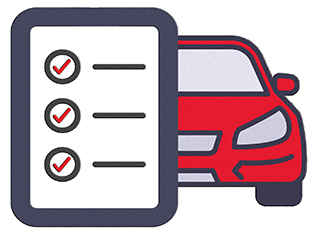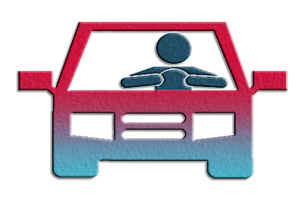What if you don’t have a car for driving test?
Here’s an expanded and detailed list of options, along with reasons why they are appropriate solutions.

Borrow a Car from a Friend or Family Member
Ask for Permission: Contact friends or family members who might be willing to lend you their car for the driving test.
Ensure the Car Meets Requirements: Make sure the car is in good working condition, registered, and insured. The vehicle should also meet the requirements of the driving test center (e.g., functioning lights, horn, seat belts).
Verify Documentation: Check that the car has up-to-date registration and insurance papers. Bring these documents with you to the test.
- Why This Is a Good Solution:
Cost-Effective: Borrowing a car can save you money compared to renting.
Convenience: You are likely to find someone in your close circle who is willing to help.
Trust and Familiarity: You are using a car from someone you know and trust, which can be less stressful.
Rent a Car
Check Rental Policies: Some car rental companies offer rentals for driving tests. Ensure the rental agreement allows for the car to be used for a driving test.
Book in Advance: Reserve the car well in advance to avoid last-minute issues.
Get Insurance: Make sure the rental car has the required insurance coverage for the driving test. Some rental companies include this as part of the package.
Choose the Right Car: Opt for a car that you are comfortable driving, preferably one similar to what you practiced with.
- Why This Is a Good Solution:
Availability: Rental companies have a wide selection of cars, ensuring you get a vehicle that meets the test requirements.
Flexibility: Renting allows you to choose a car that you feel comfortable driving.
Professional Maintenance: Rental cars are usually well-maintained, reducing the risk of mechanical issues during the test.
Use a Driving School Car
Contact Driving Schools: Reach out to local driving schools to see if they offer the use of their cars for driving tests.
Book a Lesson: Some driving schools require you to book a lesson with them before using their car for the test. This can also serve as a useful refresher.
Confirm Availability: Ensure the driving school car is available on the date and time of your test.
- Why This Is a Good Solution:
Instructor Support: You may get a short lesson or a refresher course before the test, boosting your confidence and skills.
Test-Ready Cars: Driving school cars are typically well-maintained and meet all the requirements for the test, including dual controls if needed.
Familiarity with Test Routes: Driving school instructors often know the test routes and can help you practice accordingly.
Hire a Driver Service
Search for Services: Look for driver services that offer cars for driving tests.
Check Reviews: Ensure the service is reputable by reading reviews and testimonials.
Schedule in Advance: Book the service in advance to secure a car for your test date.
Confirm Details: Make sure all details are confirmed, including pick-up times and locations.
- Why This Is a Good Solution:
Professional Service: These services are experienced in providing cars for driving tests, ensuring the car is suitable and compliant.
Peace of Mind: A professional service can reduce stress, knowing you have a reliable option.
Customized Packages: Some services offer packages that include a practice session before the test.
Utilize Public Resources
Check with Local Government: Some local government programs or community centers may offer cars for driving tests.
Research Online: Look for any community resources or grants available to help with driving test preparations.
Reach Out to Nonprofits: Some nonprofit organizations offer assistance to individuals who need help with driving tests, including providing cars.
- Why This Is a Good Solution:
Accessibility: Public resources may be available for those who cannot afford other options.
Community Support: These programs are designed to help individuals in need, providing a sense of community support.
Potential Financial Aid: Some programs might offer financial assistance to cover costs associated with the driving test.
Recent News and Updates


New Regulations and Innovations
- Enhanced Safety Requirements:
Several states have recently updated their safety requirements for test vehicles, ensuring that cars used in tests have advanced safety features like backup cameras and blind-spot monitors.
- Online Booking Systems:
Many DMV offices across the U.S. have implemented new online booking systems for driving tests, making it easier to schedule and reschedule appointments.
- Green Initiatives:
Some states are encouraging the use of electric and hybrid vehicles for driving tests to promote environmental sustainability.
- Virtual Driving Tests:
In response to the COVID-19 pandemic, a few states experimented with virtual driving tests, where instructors remotely assessed driving skills using cameras and other technologies.
- Expanded Testing Locations:
To reduce wait times, several states have opened new testing locations and mobile testing units, making it more convenient for applicants to find a nearby test center.
Interesting Facts About Taking a Driving Test in the U.S.


Varied Requirements:
Each state in the U.S. has its own specific requirements for driving tests, including different age requirements, test formats, and necessary documentation.
First-Time Failure Rates:
Statistics show that a significant number of applicants fail their driving test on the first attempt, highlighting the importance of adequate preparation.
Automatic vs. Manual:
In some states, taking the test in a manual transmission car can result in an endorsement on your license, allowing you to drive both automatic and manual cars.
Parallel Parking:
This maneuver is often one of the most dreaded parts of the driving test for many applicants, but it is a critical skill assessed in most states.
Road Test Route:
Many driving test centers have specific routes they follow during the road test. Practicing on these routes can improve your chances of passing.
Technology Use:
Some states are incorporating technology, example: in-car cameras and automated scoring systems, to ensure the accuracy and fairness of the driving test.
Understanding these options, recent updates, and interesting facts can help you feel more prepared and confident as you approach your driving test without your own car.












